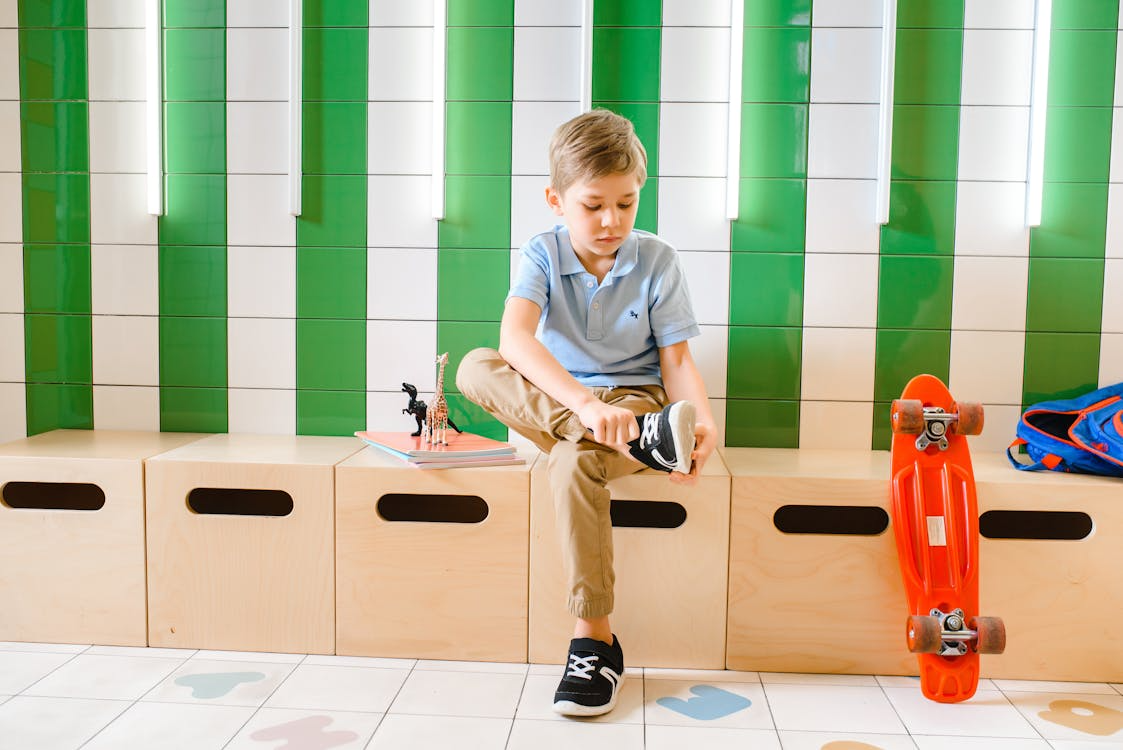Feeling boxed in by your living space? Trust me, you're not the only one battling that claustrophobic sensation when walls seem to close in daily. Maybe you're stuck in a studio apartment, or perhaps you just want your existing rooms to finally breathe.
Here's the good news: professional room design tips can work absolute magic on even the most cramped spaces, no sledgehammers or mortgage-breaking renovations required. The secret? These battle-tested strategies fool your brain into seeing more space than what's actually there.
Here's something fascinating: mentions of sensory gardens or pathways have increased by 314%, highlighting that people want a magical outdoor experience any time of the year. That surge tells us something crucial, we're all desperately craving that feeling of openness and freedom. Everything starts with light. It's your secret weapon for spatial transformation.
Effective lighting forms the cornerstone of any spacious-feeling environment. But we're not talking about slapping up another ceiling fixture and calling it good. You need multiple light sources working in harmony.
Mirrors do way more than show you how your hair looks. Position one directly across from a window, and watch natural light bounce deeper into your room, instant brightness doubling. Those large floor mirrors? Lean them casually against walls for depth that doesn't scream "I'm trying too hard."
Here's where it gets interesting: scatter smaller mirrors at different heights. Creates visual flow that keeps eyes moving. Mirrored furniture pieces like side tables or consoles? They're functional while maintaining that light-bouncing magic. Even picture frames with mirrored elements contribute to the overall brightness effect.
Floor-to-ceiling curtains work miracles on window and ceiling height perception. Mount those rods as close to the ceiling as humanly possible, extending them several inches beyond the actual window frame.
Sheer layering gives you privacy without sacrificing precious daylight. Combine lightweight sheers with heavier drapes that pull completely back during bright hours. Want a simple, commitment-free way to frame windows and make them appear larger? Try using wallpaper peel and stick options around window areas, they create the illusion of bigger openings and remove easily when you want changes without permanent alterations.
LED strips tucked behind furniture create this incredible floating illusion, suddenly your pieces look weightless. Install them under floating shelves or behind headboards for instant drama. Uplighting? That's your ticket to making ceilings appear miles high.
Smart lighting systems revolutionize how you control spatial perception throughout the day. Bright, cool light during daytime hours makes spaces feel significantly larger. Then you switch to warmer tones for evening coziness.
While strategic lighting builds your spaciousness foundation, color choices either amplify or completely sabotage these light-enhancing effects.
Color psychology dramatically influences spatial perception. The right palette literally pushes walls outward and makes ceilings soar.
All-white isn't your only spaciousness option. Get this: settings with natural materials are rated as significantly more spacious than concrete, which proves material selection matters tremendously.
Try monochromatic schemes using any color family. Soft blues work beautifully. So do warm grays or gentle greens throughout a room. Vary tones from light to dark for depth without visual chaos. Texture becomes absolutely crucial here, think woven baskets, chunky knitted throws, natural wood accents.
Your accent wall choice matters more than you think. Keep that first wall you see when entering light-colored, while the farthest wall can handle darker tones. This pulls your gaze forward, creating depth illusions.
Geometric patterns or subtle vertical stripes make ceilings appear dramatically higher. Horizontal patterns work wonders for making narrow rooms feel wider.
Cool tones naturally recede, making walls seem farther away. Incorporate soft blues, greens, and purples to push boundaries outward. These home decor ideas work exceptionally well in north-facing rooms with limited natural light.
Use warm tones sparingly as accent pieces. Interestingly, sage green leads at 26% of designer votes for most popular color in 2024, with other earthy tones following closely. These natural hues create psychological connections to outdoor spaces.
Now that you've mastered visual expansion through color and light, let's tackle the physical elements that can make or break your spacious illusion, furniture choices and strategic placement.
Your furniture decisions either support spatial goals or completely destroy them. According to the 1stDibs report, more than half (56%) of designers expect kitchens to be the most requested room design of 2024, with living rooms (48%) and bathrooms (37%) following closely.
Storage ottomans function as seating, coffee tables, and clutter hideaways simultaneously. Expandable dining tables accommodate guests without permanently hogging floor space. Wall-mounted desks fold completely away when you're done working.
Look for pieces that multitask without screaming "storage solution." Vintage trunks serve as coffee tables and blanket storage. Wall bench seating provides both sitting areas and hidden storage compartments.
Furniture with exposed legs maintains precious visual floor space, preventing that cluttered feeling. Choose pieces following the two-thirds rule, sofas should measure roughly two-thirds the length of their wall.
Don't push everything against walls! Floating conversation areas actually make rooms feel larger by creating defined zones. Keep pathways clear and maintain visual breathing room around each piece.
Wall-mounted nightstands and vanities free up valuable bedroom floor space. Suspended shelving systems draw eyes upward while providing storage. These interior design tricks work especially well in cramped spaces.
Hanging plants and pendant lights utilize vertical space effectively. They add visual interest without cluttering surfaces or blocking sight lines.
Beyond selecting proper furniture pieces, you can create even more dramatic spatial transformations by manipulating the architectural elements defining your room's boundaries.
Sometimes minor architectural tweaks create the biggest perceived space impact.
Vertical artwork lines, tall bookcases, and floor-to-ceiling built-ins draw eyes skyward. Crown molding creates taller ceiling illusions, especially when it matches wall color rather than contrasting.
Avoid anything emphasizing horizontal lines near ceiling height. Instead, use vertical elements to create soaring space illusions.
Open sight lines between rooms make individual spaces feel dramatically larger. Can't remove walls? Consider creating wider doorway openings. Consistent flooring throughout connected areas creates visual continuity.
Glass doors and room dividers provide separation without blocking light or views. They maintain privacy while preserving openness sensations.
View access significantly affects perceived spaciousness, with larger windows accounting for 36.3% of the variance in perceived spaciousness in VR settings. Even extending window frames slightly beyond actual openings creates larger appearances.
Pocket doors eliminate swing space requirements, freeing up valuable square footage. Replace solid doors with glass panels where privacy isn't essential.
While architectural modifications create impressive spatial illusions, the most overlooked space-killer lurking in every room is clutter, conquering it requires strategic psychological approaches.
Clutter kills spaciousness faster than anything else. These design secrets for small spaces focus on creating clean, uncluttered environments that feel genuinely open and breathable.
Under-stair storage systems blend seamlessly with existing architecture. Built-in window seat storage serves dual purposes while maintaining clean lines. Ceiling-mounted storage keeps seasonal items accessible yet invisible.
The key? Making storage completely invisible. Closed storage always beats open shelving for maintaining spacious feelings.
Implement the one-in-one-out rule religiously. Every new item requires removing something else. Create designated homes for everyday items so nothing permanently lives on surfaces.
Clear storage containers reduce visual bulk compared to opaque options. You see contents without creating visual chaos.
Adopt the Japanese "ma" concept, appreciating negative space as much as filled space. Leave breathing room around furniture groupings and resist filling every corner.
Quality trumps quantity with decorative elements. Choose fewer, more meaningful pieces you truly love rather than filling spaces with mediocre items.
Having mastered these five comprehensive design secrets, you're ready for quick-win strategies delivering immediate spatial impact with minimal effort.
Raise furniture on risers to increase visible floor space underneath. Glass and lucite accessories maintain transparency while providing function. Proper cord management creates cleaner, less cluttered aesthetics.
Swap heavy winter textiles for lighter summer alternatives. Adjust décor density based on available natural light, fewer pieces during darker months, more during bright seasons.
Creating spacious-feeling rooms doesn't demand major renovations or enormous budgets. These proven room design tips work by understanding how our eyes and minds actually perceive space. Smart lighting, thoughtful color choices, strategic furniture placement, architectural awareness, and clutter control all contribute to rooms that breathe better.
The secret lies in thinking holistically: every single element should work together to make a room feel spacious. Start with whichever technique resonates most with your space, then gradually layer in others for maximum impact.
Which room design tips work best for apartments with low ceilings?
Focus on vertical lines, light colors, and avoid heavy overhead fixtures that emphasize ceiling limitations.
Can dark colors ever help make a room feel spacious?
Absolutely, when strategically used on single accent walls in rooms with abundant natural light.
What's the biggest mistake people make with small spaces?
Over-decorating with too many small accessories creates visual clutter instead of desired spaciousness.




Want to add a comment?